Leadership
Deep Scientific Expertise and Strategic Vision
Under the direction of Dr. Christopher Deeney, LLE’s leadership team oversees critical areas such as experimental operations, laser science and technology, engineering, target fabrication, theory, sustainment, facility management, and more.
Their leadership sustains LLE’s reputation as a unique national resource.
Director
Dr. Christopher Deeney
Christopher Deeney, Ph.D., is the fifth Director of the Laboratory for Laser Energetics. He
previously served as Chief Science and Technology Officer, National Security Directorate, at Pacific Northwest National Laboratory (PNNL), in addition to his years of experience at the Nevada National Security Site as a Vice President and Chief Technology Officer. He managed the almost $2 billion research and development portfolio for the Department of Energy’s National Nuclear Security Administration. As a researcher and senior manager, he worked at Sandia National Laboratories. Chris is known as a scientific and innovation leader with direct experience running complex operations, especially in high-energy-density physics.
In his role as Director, Deeney manages the Laboratory’s senior management staff, providing executive-level guidance and direction. He participates in the day-to-day management of the Laboratory; fosters successful relationships among University Senior Leadership; federal, local, and state government officials; peer organizations and laboratories; Department of Energy; National Science Foundation; Department of Defense; private industry; and the local community. He participates in ongoing University strategy development. At LLE, he develops strategies with an emphasis on bringing high-quality science and technology solutions to address key challenges in fusion, high-energy-density physics, and laser technologies while maintaining effective operations of the academia’s largest lasers and educating future generations of scientists and engineers.
Chris received his Ph.D. in Plasma Physics from the Imperial College in the United Kingdom. He is a Fellow of the American Physical Society and the Institute of Electrical and Electronic Engineers.
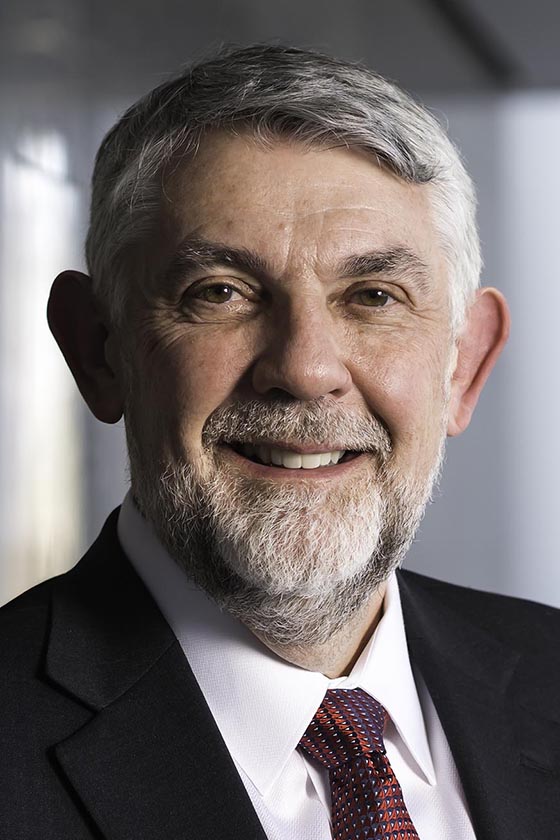
Academics, Science, & Technology
Gilbert “Rip” Collins
Gilbert received his Ph.D. in Physics at The Ohio State University in 1989, and for the next 27 years worked at LLNL as a Staff Scientist, Group Leader for Cryogenics, Group Leader for High-Energy-Density (HED) Shock Physics, Associate Division Leader in Physics, Director for the Center of HEDS, and Member of the Distinguished Technical Staff. He helped build and worked with several world-recognized groups exploring different aspects of HEDS and Stockpile Stewardship, hiring 34 scientists. In 2016, he moved to the University of Rochester, where he is the Tracy Hyde Harris Professor of Physics and Mechanical Engineering, and Associate Director at the Laboratory for Laser Energetics.
He is working with an outstanding team of scientists and students at Rochester, LLNL, and institutions worldwide, exploring and documenting the microphysics of HEDS (curriculum and research). He has >260 publications; an h-factor ~65; led many HEDS workshops, conferences, sessions at DPP, summer schools, courses, and advisory committees; and has directed ~25 students. He has received several awards including the Bridgman Award, APS Fellowship, APS award for Excellence in Plasma Physics, U.S. DOE Weapons Recognition of Excellence Award, NNSA Award for Excellence in the SSP, and NNSA Science and Technology award.
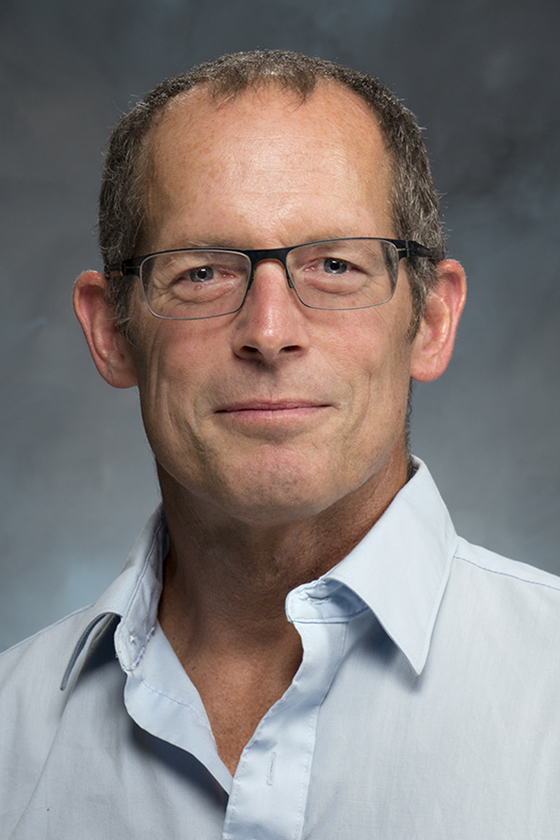
Administration
Steve Stagnitto
Steven J. Stagnitto is the Administrative Division Director and Controller at the Laboratory for Laser Energetics (LLE). He oversees administrative services, including human resources, finance and accounting, procurement, contractual management, publications, and facility management. He also serves as the Facility Security Officer for the lab.
Mr. Stagnitto joined LLE in 1998 as an Optical Engineer in the Opto-Mechanical Systems group, contributing to the design of laser diagnostics and implementing enhancements for the OMEGA laser system. In 2001, he was appointed section leader of the Opto-Mechanical Systems group, a role he held until 2008. That year, he transitioned to Associate Laser Facility Manager for OMEGA, and in 2011, he was promoted to Laser Facility Manager, overseeing operations until 2018. In September 2018, he was appointed Administrative Division Director and Controller.
Mr. Stagnitto earned a B.S. in Optics with Distinction from the University of Rochester’s Institute of Optics in 1998. He completed his M.B.A. at the University of Rochester’s Simon Business School in 2003, where he was elected to Beta Gamma Sigma, the national honor society for business administration.
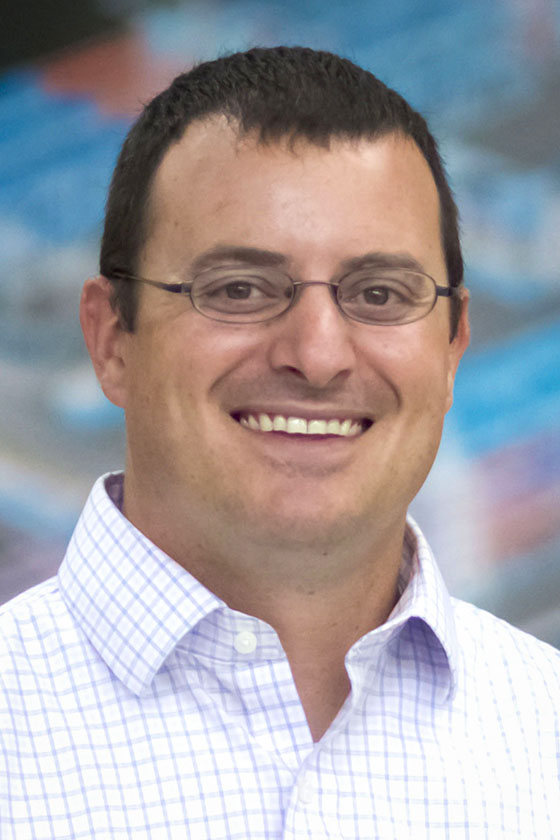
Chief Scientist
Riccardo Betti
Riccardo Betti is the Robert L. McCrory Professor, Professor of Mechanical Engineering and Professor of Physics and Astronomy at the University of Rochester. He is also the Chief Scientist of the Laboratory for Laser Energetics at the University of Rochester.
His research involves high-temperature plasma physics with applications to nuclear fusion. He served as Chair of the Division of Plasma Physics of the American Physical Society, Vice Chair of the Fusion Energy Science Advisory Committee of the U.S. Department of Energy, Chair of the Plasma Science Committee of the National Research Council, and Member of the Board of Physics and Astronomy of the U.S. National Academy of Science. He received the Edward Teller Medal from the American Nuclear Society, the Leadership Award from Fusion Power Associates, the E.O. Lawrence Award from the U.S. Department of Energy, and the Lifetime Achievement Award from the Hajim School of Engineering and Applied Sciences of the University of Rochester.
He has supervised 27 graduate students and postdoctoral fellows and co-authored over 240 peer-reviewed papers. He received his Ph.D. in Nuclear Engineering from the Massachusetts Institute of Technology in 1992.
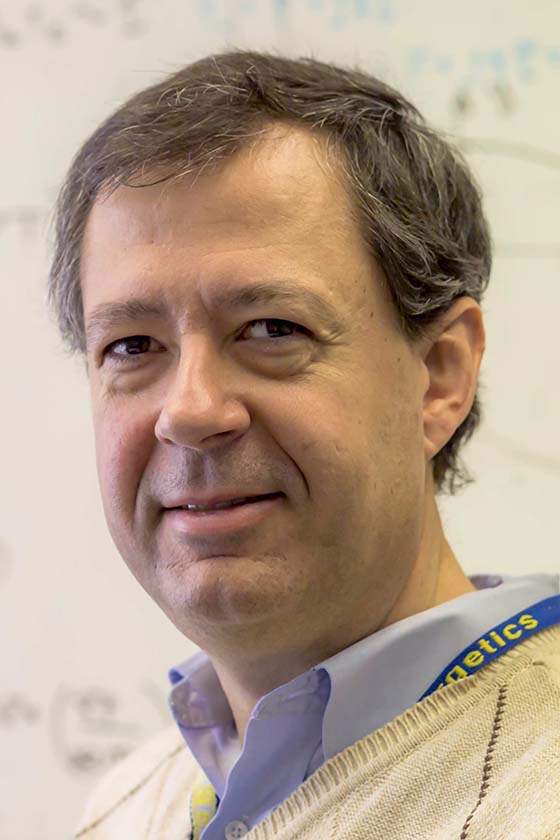
Engineering
Chuck Sorce
Charles M. Sorce is the Engineering Division Director at the Laboratory for Laser Energetics (LLE). He oversees a multidisciplinary division responsible for developing and maintaining the technology infrastructure essential for LLE’s research. This includes Electrical Engineering, Mechanical Engineering, and Information Technology.
Mr. Sorce began his career at LLE in 1998 as a contracted technical liaison for MIT’s charged particle research. In 1999, he joined LLE as a Laboratory Engineer, working on gated x-ray and neutron detectors while supporting charged-particle diagnostics. In 2002, he joined Lawrence Livermore National Laboratory (LLNL) as their on-site engineering liaison at LLE, supporting high-energy-density, inertial confinement fusion, and basic science programs. In this role, he collaborated with scientists and engineers to develop experiments, managed new diagnostic projects, and served as a principal investigator for diagnostic characterization campaigns.
In 2011, Mr. Sorce rejoined LLE as a Research Engineer, establishing and leading the Experimental Support Group until 2019, when he was promoted to his current role as Engineering Division Director.
Mr. Sorce earned a B.A. in Physics from SUNY Geneseo in 1998 and an MBA from the University of Rochester’s Simon School of Business in 2020, where he received the Hugh H. Whitney Award for academic excellence.
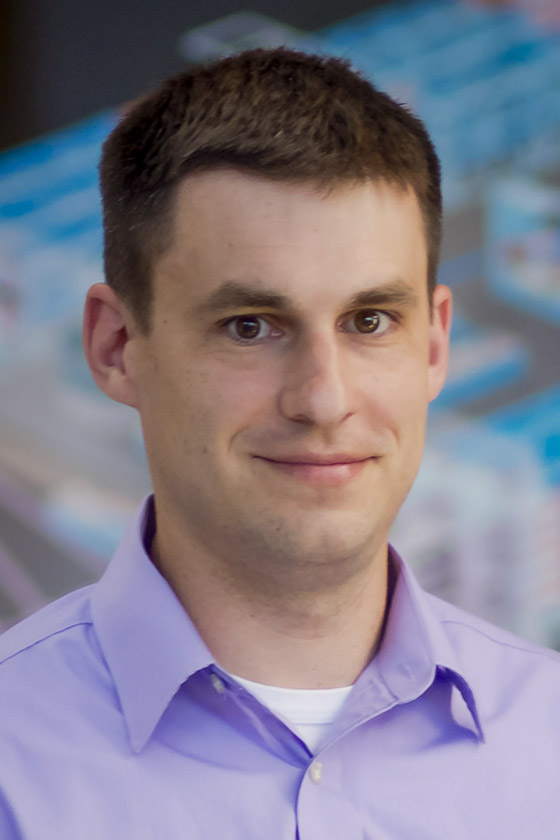
Experiments
Sean Regan
Sean P. Regan is the Director of the Experimental Division at the Laboratory for Laser Energetics (LLE) and holds a secondary teaching appointment in the Department of Mechanical Engineering at the University of Rochester. His research focuses on experiments and diagnostic development for inertial confinement fusion and high-energy-density physics, conducted at the Omega Laser Facility and the National Ignition Facility (NIF) at Lawrence Livermore National Laboratory (LLNL).
Dr. Regan earned his Ph.D. in Physics and Astronomy from Johns Hopkins University (JHU) in 1995, followed by a Post-Doctoral Fellowship with JHU’s Plasma Spectroscopy Group. He joined LLE in 1997 as a Scientist, was promoted to Senior Scientist in 2005, and became a Distinguished Scientist in 2020. From 2014 to 2021, he led the Omega Experiments Group within the Experimental Division. He is a Fellow of the American Physical Society and a recipient of the Fusion Power Associates Leadership Award.
Dr. Regan collaborates with researchers at LLNL, Los Alamos, Sandia, Oxford, Imperial College, Queens University-Belfast, the University of Bordeaux, MIT, JHU, and others. He has delivered numerous invited talks and co-authored over 270 publications. Training graduate students to become future scientists and engineers is central to his work.
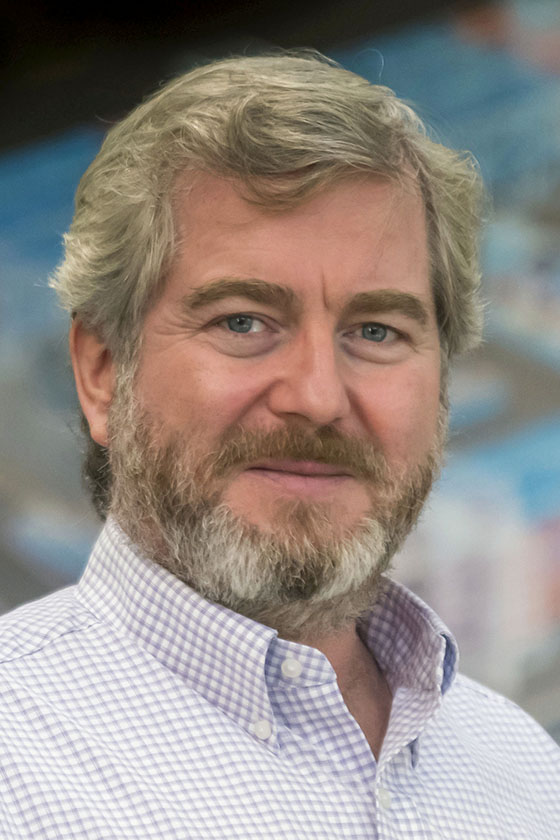
Infrastructure Planning & Sustainment
Samuel F.B. Morse
Samuel F. B. Morse is the Infrastructure Planning and Sustainment Execution Manager at the University of Rochester’s Laboratory for Laser Energetics (LLE). He oversees laboratory space planning, new building projects, renovation plans, and initiatives to sustain the Omega Facility into the 2030s.
Morse joined LLE in 1983 as an optical engineer, contributing to the development of the 24-beam OMEGA laser system. He worked on laser oscillators, frequency conversion from infrared to ultraviolet, and managed the Laser Operations Group. From 1990 to 1995, he led a major segment of the OMEGA Upgrade Project, transforming the laser into a 60-beam facility. As Laser Facility Manager in the late 1990s, he enhanced operational readiness and formalized facility operations while driving improvements.
In 2001, Morse became Project Manager for the OMEGA EP addition, overseeing its design and construction. Completed in April 2008, the project was delivered on schedule and within budget. From 2008 to 2024, he served as Omega Facility Division Director, managing operations and scheduling for the facility.
Morse earned a B.S. in Optics from the University of Rochester in 1983 and an MBA from the Simon School of Business in 1998.
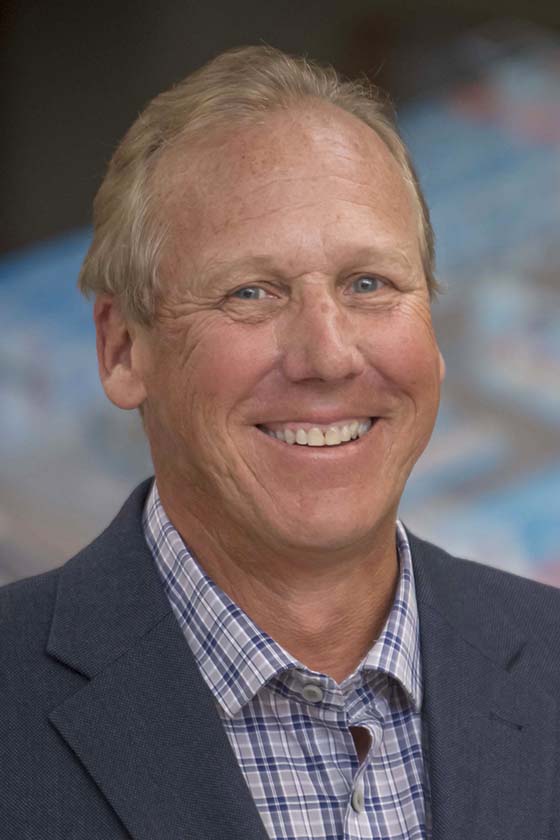
Laser and Materials Technology
Jon Zuegel
Dr. Jonathan D. Zuegel is the Laser and Materials Technology Division Director and a Distinguished Scientist at the University of Rochester’s Laboratory for Laser Energetics (LLE). He previously led the Laser Development and Engineering Division (2014–2019) and the Laser Technology Development Group (2001–2014).
Dr. Zuegel is a Fellow of Optica (formerly OSA) and has held leadership roles in several major conferences, including serving as program chair and general chair for the Optica Advanced Solid State Photonics (ASSP) meeting and the Conference on Lasers and Electro-Optics (CLEO). He has also been program chair for the International Committee on Ultra-Intense Lasers (ICUIL) conference, a member of the CLEO Steering Committee, and director of the 2019 OSAF Siegman Summer School on Lasers. Additionally, he has served on advisory committees for the Extreme Light Infrastructure (ELI) in Europe and chairs the DESY-European XFEL Laser Advisory Committee.
Dr. Zuegel joined LLE in 1996 after earning his Ph.D. in Optics from the University of Rochester. He holds a B.S. (1983) and M.Eng. (1984) in Electrical Engineering from Cornell University and served in the U.S. Navy’s Division of Naval Reactors. He has authored or co-authored over 100 papers and 150 conference presentations.
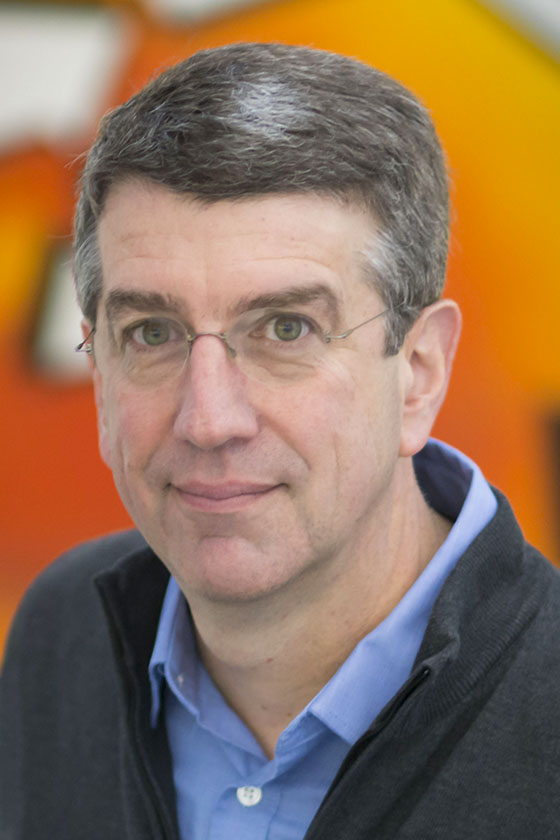
National Laser Users Facility
Mingsheng Wei
Dr. Mingsheng Wei is a Senior Scientist and Manager of the National Laser Users’ Facility (NLUF) at the University of Rochester’s Laboratory for Laser Energetics (LLE). She coordinates external users’ experiments at the Omega Laser Facility through the NLUF, Laboratory Basic Science (LBS), and LaserNetUS programs. Dr. Wei is dedicated to advancing the high-energy-density physics (HEDP) field and fostering workforce development.
Before joining LLE, Dr. Wei was a Scientist and Principal Investigator at General Atomics (2010–2018), leading research in HEDP, inertial confinement fusion (ICF), and fast and shock ignition, as well as developing targets for repetition-rated laser experiments. From 2005 to 2010, she was a Project Scientist at the University of California, San Diego, conducting high-intensity laser experiments and simulations to study relativistic laser–plasma interactions and energetic particle beam generation.
Dr. Wei has served on the Executive Committees of the Omega Laser User Group (OLUG) and the National Ignition Facility User Group, as well as on program and review panels for major conferences and funding agencies. A Fellow of the American Physical Society, she has authored over 100 peer-reviewed publications, including in Nature Physics and Physical Review Letters.
Dr. Wei earned her Ph.D. in Laser Plasma Physics from Imperial College London in 2005.
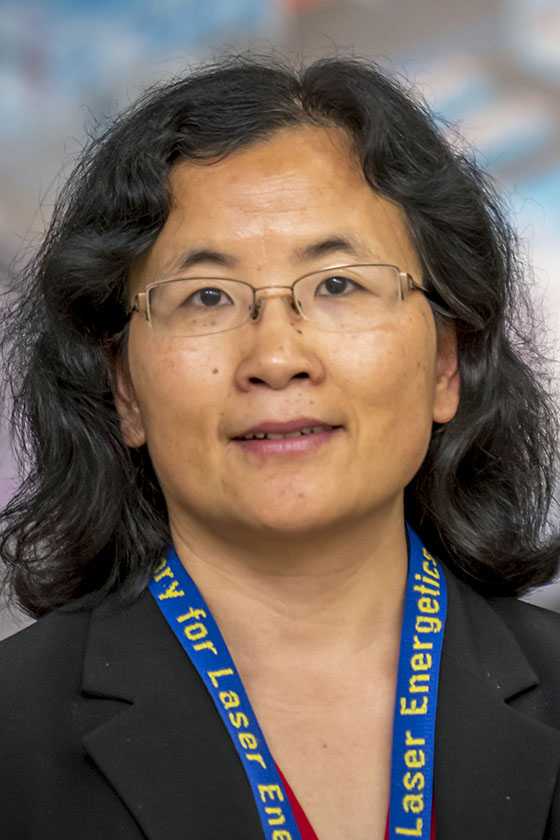
Omega Laser Facility
Jason Puth
Jason Puth is the Omega Operations Division Director at the University of Rochester’s Laboratory for Laser Energetics. His career at LLE began in 2000 while he was completing a master’s degree at the University of Rochester with a design project to replace Target Viewing System cameras on OMEGA to achieve higher resolution and greater precision. Following that assignment, Jason was selected to manage the engineering and implementation of the OMEGA EP Sources subsystem in 2001. This effort included work on seed lasers, pulse shaping, nonlinear optics, and amplifier technologies as well as the diagnostics to characterize the highly specialized pulses for OMEGA EP. Following this work, Jason served as OMEGA and OMEGA EP Frontend Laser Systems Group Leader. In 2011, he was selected as the Operations Manager for both the OMEGA and OMEGA EP Facilities. With this background, Jason now oversees the Operations Division including the OMEGA, OMEGA EP, and Cryogenic & Tritium Facilities. He also contributes to LLE as a Laser Safety Officer.
Jason received a BS in physics from Allegheny College in 1999 and a MS in optics from the University of Rochester in 2001.
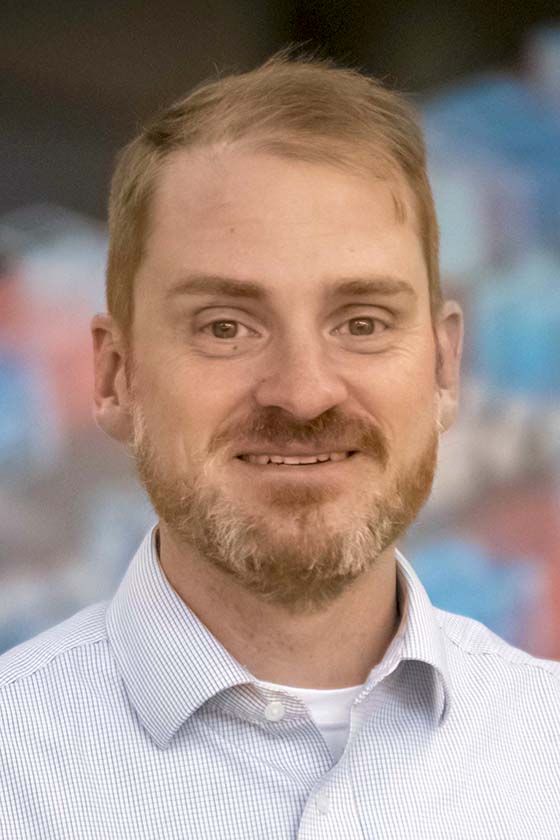
Plasma & Ultrafast Laser Science & Engineering
Dustin Froula
Prof. Dustin Froula received his M.S. and Ph.D. in Physics from the University of California, Davis, in 2000 and 2002, respectively. He worked as a research scientist at the National Ignition Facility at Lawrence Livermore National Laboratory (2002–2010) before spending a sabbatical year at UCLA, where he completed the book Plasma Scattering of Electromagnetic Radiation: Theory and Measurement Techniques. He joined the Laboratory for Laser Energetics (LLE) as a Senior Scientist, became the Plasma and Ultrafast Physics Group Leader in 2011, and was named Director of Plasma & Ultrafast Laser Science & Engineering in 2021. He is also a Professor of Physics (research) in the Department of Physics and Astronomy.
Prof. Froula received the Department of Energy’s Outstanding Mentor Award in 2007 and was named a Fellow of the American Physical Society in 2017 for his contributions to Thomson scattering and laser–plasma instabilities. He received the 2019 John Dawson Award for Excellence in Plasma Physics Research and the 2020 Ernest Orlando Lawrence Award for his pioneering work in laser–matter interactions and plasma physics.
His research focuses on experimental plasma and laser physics, including laser–plasma interactions, inertial confinement fusion, and high-energy-density physics, using the OMEGA, OMEGA EP, MTW, and OPAL Laser Systems.
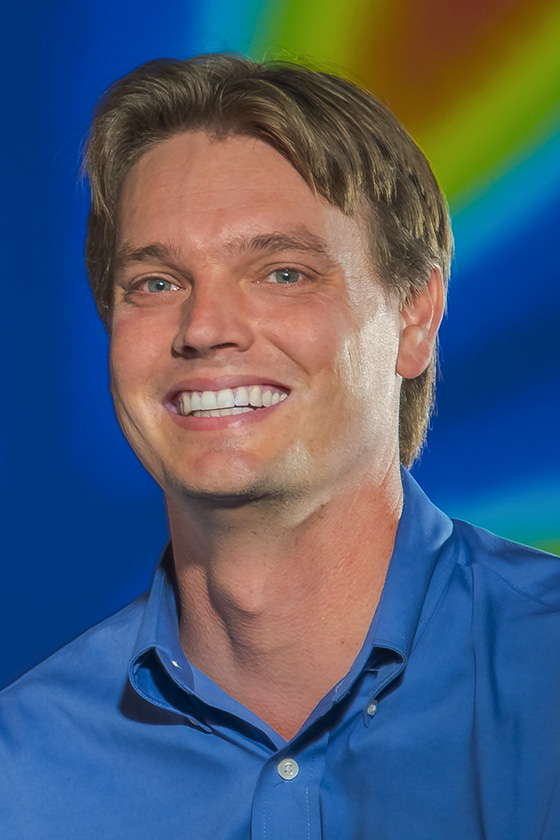
Safety
Scott Householder
Scott Householder is the Chief Safety Officer at the Laboratory for Laser Energetics (LLE), where he leads a multidisciplinary safety team overseeing research and manufacturing labs, as well as the MTW, NSF-OPAL, FLUX, OMEGA EP, and OMEGA 60 Laser Systems.
Mr. Householder began his career at the University of Rochester in 1999, ensuring Strong Hospital’s systems were Y2K-compliant. While in the Clinical Engineering Department, he specialized in ventilator and pacemaker service. In 2000, he joined LLE, contributing to the Power Conditioning System of OMEGA 60, a 24-MJ capacitor storage system driving high-energy laser amplification.
Over his 22+ years at LLE, Mr. Householder has supported Omega shot operations and worked extensively on laser amplifiers, OAPI controls, facility interlocks, grounding, and shielding for OMEGA and OMEGA EP. He has also provided engineering support for the Cryo & Tritium Facility, MIFEDS, and the Hardware Timing System. His contributions include creating the LaCave escort training program, authoring LLE’s Lockout/Tagout policy, and serving as Shot Director for OMEGA EP and as LLE’s Electrical Safety Officer.
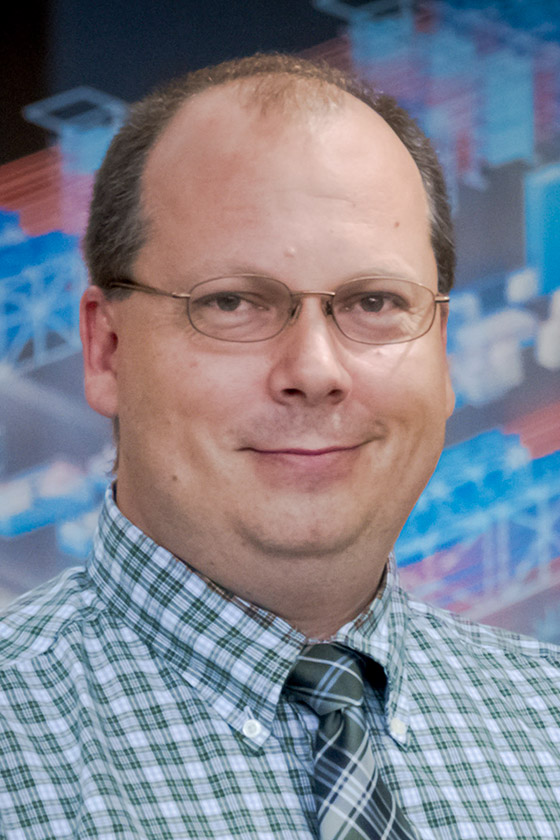
Theory
Valeri Goncharov
Dr. Valeri N. Goncharov is a Distinguished Scientist and the Theory Division Director at the Laboratory for Laser Energetics (LLE), where he leads the theoretical science staff. He is also an Assistant Professor (Research) in the Department of Mechanical Engineering, teaching graduate courses in advanced mathematical methods, partial differential equations, fluid mechanics, and plasma physics.
Dr. Goncharov joined LLE in 1998, was promoted to Senior Scientist in 2005, and became Leader of the Theory Group in 2006. His research focuses on hydrodynamic instabilities, plasma physics, thermal transport, and high-energy-density plasmas. In 2007, he was named a Fellow of the American Physical Society for his significant contributions to the theory of ablative Rayleigh–Taylor and Richtmyer–Meshkov instabilities and for developing techniques to mitigate their growth through adiabat shaping.
Dr. Goncharov earned his B.Sc. in Nuclear Physics in 1993 from the Moscow Engineering Physics Institute in Russia. He received his M.Sc. in 1995 and Ph.D. in 1998, both in Mechanical Engineering, from the University of Rochester.
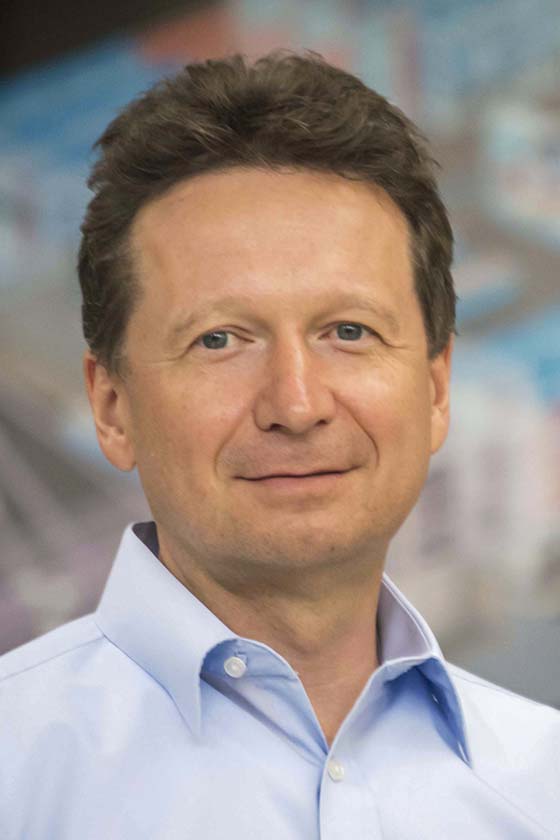
Director
Dr. Christopher Deeney
Christopher Deeney, Ph.D., is the fifth Director of the Laboratory for Laser Energetics. He
previously served as Chief Science and Technology Officer, National Security Directorate, at Pacific Northwest National Laboratory (PNNL), in addition to his years of experience at the Nevada National Security Site as a Vice President and Chief Technology Officer. He managed the almost $2 billion research and development portfolio for the Department of Energy’s National Nuclear Security Administration. As a researcher and senior manager, he worked at Sandia National Laboratories. Chris is known as a scientific and innovation leader with direct experience running complex operations, especially in high-energy-density physics.
In his role as Director, Deeney manages the Laboratory’s senior management staff, providing executive-level guidance and direction. He participates in the day-to-day management of the Laboratory; fosters successful relationships among University Senior Leadership; federal, local, and state government officials; peer organizations and laboratories; Department of Energy; National Science Foundation; Department of Defense; private industry; and the local community. He participates in ongoing University strategy development. At LLE, he develops strategies with an emphasis on bringing high-quality science and technology solutions to address key challenges in fusion, high-energy-density physics, and laser technologies while maintaining effective operations of the academia’s largest lasers and educating future generations of scientists and engineers.
Chris received his Ph.D. in Plasma Physics from the Imperial College in the United Kingdom. He is a Fellow of the American Physical Society and the Institute of Electrical and Electronic Engineers.

Academics, Science, & Technology
Gilbert “Rip” Collins
Gilbert received his Ph.D. in Physics at The Ohio State University in 1989, and for the next 27 years worked at LLNL as a Staff Scientist, Group Leader for Cryogenics, Group Leader for High-Energy-Density (HED) Shock Physics, Associate Division Leader in Physics, Director for the Center of HEDS, and Member of the Distinguished Technical Staff. He helped build and worked with several world-recognized groups exploring different aspects of HEDS and Stockpile Stewardship, hiring 34 scientists. In 2016, he moved to the University of Rochester, where he is the Tracy Hyde Harris Professor of Physics and Mechanical Engineering, and Associate Director at the Laboratory for Laser Energetics.
He is working with an outstanding team of scientists and students at Rochester, LLNL, and institutions worldwide, exploring and documenting the microphysics of HEDS (curriculum and research). He has >260 publications; an h-factor ~65; led many HEDS workshops, conferences, sessions at DPP, summer schools, courses, and advisory committees; and has directed ~25 students. He has received several awards including the Bridgman Award, APS Fellowship, APS award for Excellence in Plasma Physics, U.S. DOE Weapons Recognition of Excellence Award, NNSA Award for Excellence in the SSP, and NNSA Science and Technology award.

Administration
Steve Stagnitto
Steven J. Stagnitto is the Administrative Division Director and Controller at the Laboratory for Laser Energetics (LLE). He oversees administrative services, including human resources, finance and accounting, procurement, contractual management, publications, and facility management. He also serves as the Facility Security Officer for the lab.
Mr. Stagnitto joined LLE in 1998 as an Optical Engineer in the Opto-Mechanical Systems group, contributing to the design of laser diagnostics and implementing enhancements for the OMEGA laser system. In 2001, he was appointed section leader of the Opto-Mechanical Systems group, a role he held until 2008. That year, he transitioned to Associate Laser Facility Manager for OMEGA, and in 2011, he was promoted to Laser Facility Manager, overseeing operations until 2018. In September 2018, he was appointed Administrative Division Director and Controller.
Mr. Stagnitto earned a B.S. in Optics with Distinction from the University of Rochester’s Institute of Optics in 1998. He completed his M.B.A. at the University of Rochester’s Simon Business School in 2003, where he was elected to Beta Gamma Sigma, the national honor society for business administration.

Chief Scientist
Riccardo Betti
Riccardo Betti is the Robert L. McCrory Professor, Professor of Mechanical Engineering and Professor of Physics and Astronomy at the University of Rochester. He is also the Chief Scientist of the Laboratory for Laser Energetics at the University of Rochester.
His research involves high-temperature plasma physics with applications to nuclear fusion. He served as Chair of the Division of Plasma Physics of the American Physical Society, Vice Chair of the Fusion Energy Science Advisory Committee of the U.S. Department of Energy, Chair of the Plasma Science Committee of the National Research Council, and Member of the Board of Physics and Astronomy of the U.S. National Academy of Science. He received the Edward Teller Medal from the American Nuclear Society, the Leadership Award from Fusion Power Associates, the E.O. Lawrence Award from the U.S. Department of Energy, and the Lifetime Achievement Award from the Hajim School of Engineering and Applied Sciences of the University of Rochester.
He has supervised 27 graduate students and postdoctoral fellows and co-authored over 240 peer-reviewed papers. He received his Ph.D. in Nuclear Engineering from the Massachusetts Institute of Technology in 1992.

Engineering
Chuck Sorce
Charles M. Sorce is the Engineering Division Director at the Laboratory for Laser Energetics (LLE). He oversees a multidisciplinary division responsible for developing and maintaining the technology infrastructure essential for LLE’s research. This includes Electrical Engineering, Mechanical Engineering, and Information Technology.
Mr. Sorce began his career at LLE in 1998 as a contracted technical liaison for MIT’s charged particle research. In 1999, he joined LLE as a Laboratory Engineer, working on gated x-ray and neutron detectors while supporting charged-particle diagnostics. In 2002, he joined Lawrence Livermore National Laboratory (LLNL) as their on-site engineering liaison at LLE, supporting high-energy-density, inertial confinement fusion, and basic science programs. In this role, he collaborated with scientists and engineers to develop experiments, managed new diagnostic projects, and served as a principal investigator for diagnostic characterization campaigns.
In 2011, Mr. Sorce rejoined LLE as a Research Engineer, establishing and leading the Experimental Support Group until 2019, when he was promoted to his current role as Engineering Division Director.
Mr. Sorce earned a B.A. in Physics from SUNY Geneseo in 1998 and an MBA from the University of Rochester’s Simon School of Business in 2020, where he received the Hugh H. Whitney Award for academic excellence.

Experiments
Sean Regan
Sean P. Regan is the Director of the Experimental Division at the Laboratory for Laser Energetics (LLE) and holds a secondary teaching appointment in the Department of Mechanical Engineering at the University of Rochester. His research focuses on experiments and diagnostic development for inertial confinement fusion and high-energy-density physics, conducted at the Omega Laser Facility and the National Ignition Facility (NIF) at Lawrence Livermore National Laboratory (LLNL).
Dr. Regan earned his Ph.D. in Physics and Astronomy from Johns Hopkins University (JHU) in 1995, followed by a Post-Doctoral Fellowship with JHU’s Plasma Spectroscopy Group. He joined LLE in 1997 as a Scientist, was promoted to Senior Scientist in 2005, and became a Distinguished Scientist in 2020. From 2014 to 2021, he led the Omega Experiments Group within the Experimental Division. He is a Fellow of the American Physical Society and a recipient of the Fusion Power Associates Leadership Award.
Dr. Regan collaborates with researchers at LLNL, Los Alamos, Sandia, Oxford, Imperial College, Queens University-Belfast, the University of Bordeaux, MIT, JHU, and others. He has delivered numerous invited talks and co-authored over 270 publications. Training graduate students to become future scientists and engineers is central to his work.

Infrastructure Planning & Sustainment
Samuel F.B. Morse
Samuel F. B. Morse is the Infrastructure Planning and Sustainment Execution Manager at the University of Rochester’s Laboratory for Laser Energetics (LLE). He oversees laboratory space planning, new building projects, renovation plans, and initiatives to sustain the Omega Facility into the 2030s.
Morse joined LLE in 1983 as an optical engineer, contributing to the development of the 24-beam OMEGA laser system. He worked on laser oscillators, frequency conversion from infrared to ultraviolet, and managed the Laser Operations Group. From 1990 to 1995, he led a major segment of the OMEGA Upgrade Project, transforming the laser into a 60-beam facility. As Laser Facility Manager in the late 1990s, he enhanced operational readiness and formalized facility operations while driving improvements.
In 2001, Morse became Project Manager for the OMEGA EP addition, overseeing its design and construction. Completed in April 2008, the project was delivered on schedule and within budget. From 2008 to 2024, he served as Omega Facility Division Director, managing operations and scheduling for the facility.
Morse earned a B.S. in Optics from the University of Rochester in 1983 and an MBA from the Simon School of Business in 1998.

Laser and Materials Technology
Jon Zuegel
Dr. Jonathan D. Zuegel is the Laser and Materials Technology Division Director and a Distinguished Scientist at the University of Rochester’s Laboratory for Laser Energetics (LLE). He previously led the Laser Development and Engineering Division (2014–2019) and the Laser Technology Development Group (2001–2014).
Dr. Zuegel is a Fellow of Optica (formerly OSA) and has held leadership roles in several major conferences, including serving as program chair and general chair for the Optica Advanced Solid State Photonics (ASSP) meeting and the Conference on Lasers and Electro-Optics (CLEO). He has also been program chair for the International Committee on Ultra-Intense Lasers (ICUIL) conference, a member of the CLEO Steering Committee, and director of the 2019 OSAF Siegman Summer School on Lasers. Additionally, he has served on advisory committees for the Extreme Light Infrastructure (ELI) in Europe and chairs the DESY-European XFEL Laser Advisory Committee.
Dr. Zuegel joined LLE in 1996 after earning his Ph.D. in Optics from the University of Rochester. He holds a B.S. (1983) and M.Eng. (1984) in Electrical Engineering from Cornell University and served in the U.S. Navy’s Division of Naval Reactors. He has authored or co-authored over 100 papers and 150 conference presentations.

National Laser Users Facility
Mingsheng Wei
Dr. Mingsheng Wei is a Senior Scientist and Manager of the National Laser Users’ Facility (NLUF) at the University of Rochester’s Laboratory for Laser Energetics (LLE). She coordinates external users’ experiments at the Omega Laser Facility through the NLUF, Laboratory Basic Science (LBS), and LaserNetUS programs. Dr. Wei is dedicated to advancing the high-energy-density physics (HEDP) field and fostering workforce development.
Before joining LLE, Dr. Wei was a Scientist and Principal Investigator at General Atomics (2010–2018), leading research in HEDP, inertial confinement fusion (ICF), and fast and shock ignition, as well as developing targets for repetition-rated laser experiments. From 2005 to 2010, she was a Project Scientist at the University of California, San Diego, conducting high-intensity laser experiments and simulations to study relativistic laser–plasma interactions and energetic particle beam generation.
Dr. Wei has served on the Executive Committees of the Omega Laser User Group (OLUG) and the National Ignition Facility User Group, as well as on program and review panels for major conferences and funding agencies. A Fellow of the American Physical Society, she has authored over 100 peer-reviewed publications, including in Nature Physics and Physical Review Letters.
Dr. Wei earned her Ph.D. in Laser Plasma Physics from Imperial College London in 2005.

Omega Laser Facility
Jason Puth
Jason Puth is the Omega Operations Division Director at the University of Rochester’s Laboratory for Laser Energetics. His career at LLE began in 2000 while he was completing a master’s degree at the University of Rochester with a design project to replace Target Viewing System cameras on OMEGA to achieve higher resolution and greater precision. Following that assignment, Jason was selected to manage the engineering and implementation of the OMEGA EP Sources subsystem in 2001. This effort included work on seed lasers, pulse shaping, nonlinear optics, and amplifier technologies as well as the diagnostics to characterize the highly specialized pulses for OMEGA EP. Following this work, Jason served as OMEGA and OMEGA EP Frontend Laser Systems Group Leader. In 2011, he was selected as the Operations Manager for both the OMEGA and OMEGA EP Facilities. With this background, Jason now oversees the Operations Division including the OMEGA, OMEGA EP, and Cryogenic & Tritium Facilities. He also contributes to LLE as a Laser Safety Officer.
Jason received a BS in physics from Allegheny College in 1999 and a MS in optics from the University of Rochester in 2001.

Plasma & Ultrafast Laser Science & Engineering
Dustin Froula
Prof. Dustin Froula received his M.S. and Ph.D. in Physics from the University of California, Davis, in 2000 and 2002, respectively. He worked as a research scientist at the National Ignition Facility at Lawrence Livermore National Laboratory (2002–2010) before spending a sabbatical year at UCLA, where he completed the book Plasma Scattering of Electromagnetic Radiation: Theory and Measurement Techniques. He joined the Laboratory for Laser Energetics (LLE) as a Senior Scientist, became the Plasma and Ultrafast Physics Group Leader in 2011, and was named Director of Plasma & Ultrafast Laser Science & Engineering in 2021. He is also a Professor of Physics (research) in the Department of Physics and Astronomy.
Prof. Froula received the Department of Energy’s Outstanding Mentor Award in 2007 and was named a Fellow of the American Physical Society in 2017 for his contributions to Thomson scattering and laser–plasma instabilities. He received the 2019 John Dawson Award for Excellence in Plasma Physics Research and the 2020 Ernest Orlando Lawrence Award for his pioneering work in laser–matter interactions and plasma physics.
His research focuses on experimental plasma and laser physics, including laser–plasma interactions, inertial confinement fusion, and high-energy-density physics, using the OMEGA, OMEGA EP, MTW, and OPAL Laser Systems.

Safety
Scott Householder
Scott Householder is the Chief Safety Officer at the Laboratory for Laser Energetics (LLE), where he leads a multidisciplinary safety team overseeing research and manufacturing labs, as well as the MTW, NSF-OPAL, FLUX, OMEGA EP, and OMEGA 60 Laser Systems.
Mr. Householder began his career at the University of Rochester in 1999, ensuring Strong Hospital’s systems were Y2K-compliant. While in the Clinical Engineering Department, he specialized in ventilator and pacemaker service. In 2000, he joined LLE, contributing to the Power Conditioning System of OMEGA 60, a 24-MJ capacitor storage system driving high-energy laser amplification.
Over his 22+ years at LLE, Mr. Householder has supported Omega shot operations and worked extensively on laser amplifiers, OAPI controls, facility interlocks, grounding, and shielding for OMEGA and OMEGA EP. He has also provided engineering support for the Cryo & Tritium Facility, MIFEDS, and the Hardware Timing System. His contributions include creating the LaCave escort training program, authoring LLE’s Lockout/Tagout policy, and serving as Shot Director for OMEGA EP and as LLE’s Electrical Safety Officer.

Theory
Valeri Goncharov
Dr. Valeri N. Goncharov is a Distinguished Scientist and the Theory Division Director at the Laboratory for Laser Energetics (LLE), where he leads the theoretical science staff. He is also an Assistant Professor (Research) in the Department of Mechanical Engineering, teaching graduate courses in advanced mathematical methods, partial differential equations, fluid mechanics, and plasma physics.
Dr. Goncharov joined LLE in 1998, was promoted to Senior Scientist in 2005, and became Leader of the Theory Group in 2006. His research focuses on hydrodynamic instabilities, plasma physics, thermal transport, and high-energy-density plasmas. In 2007, he was named a Fellow of the American Physical Society for his significant contributions to the theory of ablative Rayleigh–Taylor and Richtmyer–Meshkov instabilities and for developing techniques to mitigate their growth through adiabat shaping.
Dr. Goncharov earned his B.Sc. in Nuclear Physics in 1993 from the Moscow Engineering Physics Institute in Russia. He received his M.Sc. in 1995 and Ph.D. in 1998, both in Mechanical Engineering, from the University of Rochester.



